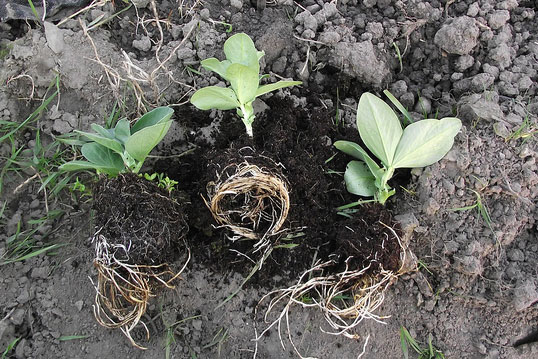Whispers in the dark – do earthworms talk to plants?

The Centre for the Evaluation of Complexity Across the Nexus (CECAN) is a hub developing new ways to measure the effectiveness of domestic policies on energy, water, environment and food (the ‘nexus’), and how they affect wider society.
Context
Earthworms are widely recognised as being beneficial to ecosystems. They are responsible for many of the soil processes that give rise to so called “ecosystem services”, that is the things that ecosystems do and provide for humans, such as food production and recreational opportunities. One commonly observed benefit that earthworms have on ecosystems is to increase plant growth. Plants tend to grow larger and more rapidly when earthworms are in the soil. With increasing concerns about food security and sustainability anything that can increase plant productivity in a “natural” way warrants investigation.
Aims and objectives
The overarching aim of this project was to determine whether earthworms impact plant growth through the production of plant growth promoting compounds (PGPCs).
To investigate our hypotheses we conducted experiments in the presence / absence of earthworms, bacteria, plants and soil organic matter (in hydroponic experiments) and measured concentrations of plant growth promoting compounds (PGPCs) and plant biomass to achieve the following objectives:
- Compare concentrations of plant growth promoting compounds (PGPCs) in soil in the presence and absence of earthworms
- Compare PGPC concentrations in soil and hydroponic experiments under sterile vs non-sterile conditions
- Compare PGPC concentrations in the presence of earthworms and the presence and absence of plants
- Compare PGPC concentrations in our soil and hydroponic experiments (taking into account the different extraction efficiencies of our analytical method for soil and hydroponic experiments)
Findings and outcomes
We present a new method for the extraction of a range of phytohormones from plant growth media (soil and hydroponic solution), their identification using FT-ICR-MS and subsequent quantification using multiple reaction monitoring. This ability to detect phytohormones in matrices other than plant tissue presents the opportunity to study further the influence of factors such as below ground herbivores and soil bacteria.
Key outcomes from the project include:
• Mass spectrometry has been used to detect a range of phytohormones in soil
• Methods allow quantification at concentrations in the ng / g of fresh soil range
• Concentrations of ABA in hydroponic solution increased when both earthworms and plants were present
• Potential applications in investigating further plant – soil interaction mechanisms
Depending on results of this project and subsequent research incorporating metagenomic analysis, in the longer term there is the potential for the agricultural sector (both commercial and government advisory) to benefit from this research through an enhanced knowledge of how soil organisms can have a beneficial impact on plant productivity. Enhancement of earthworm populations to increase biomass production may be a useful tool in the drive towards sustainable agricultural methods. Similarly, domestic gardeners. allotment owners, etc. may benefit from a better understanding of how to increase crop yields in a sustainable way without the use of agrochemicals
- Prof Mark Hodson (Principal Investigator)
- Prof Jane Thomas-Oates (Principal Investigator)
Principal Investigators
- Prof Mark Hodson (Environment and Geography, University of York)
- Prof Thomas-Oates (Chemistry, University of York)
Co-Investigator
- Dr Kirsty High (Centre for Human Palaeoecology & Evolutionary Origins, University of York)
Natural Environment Research Council (NERC)